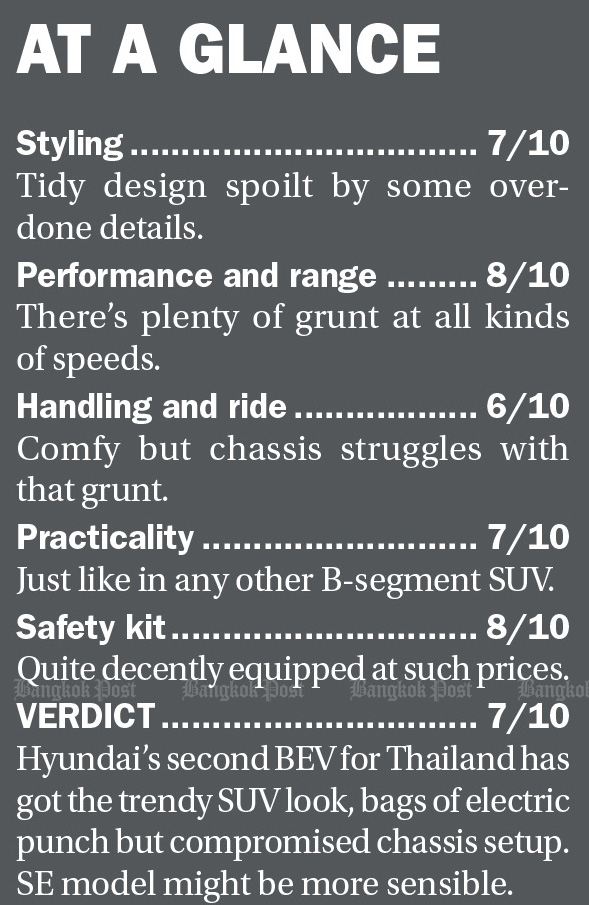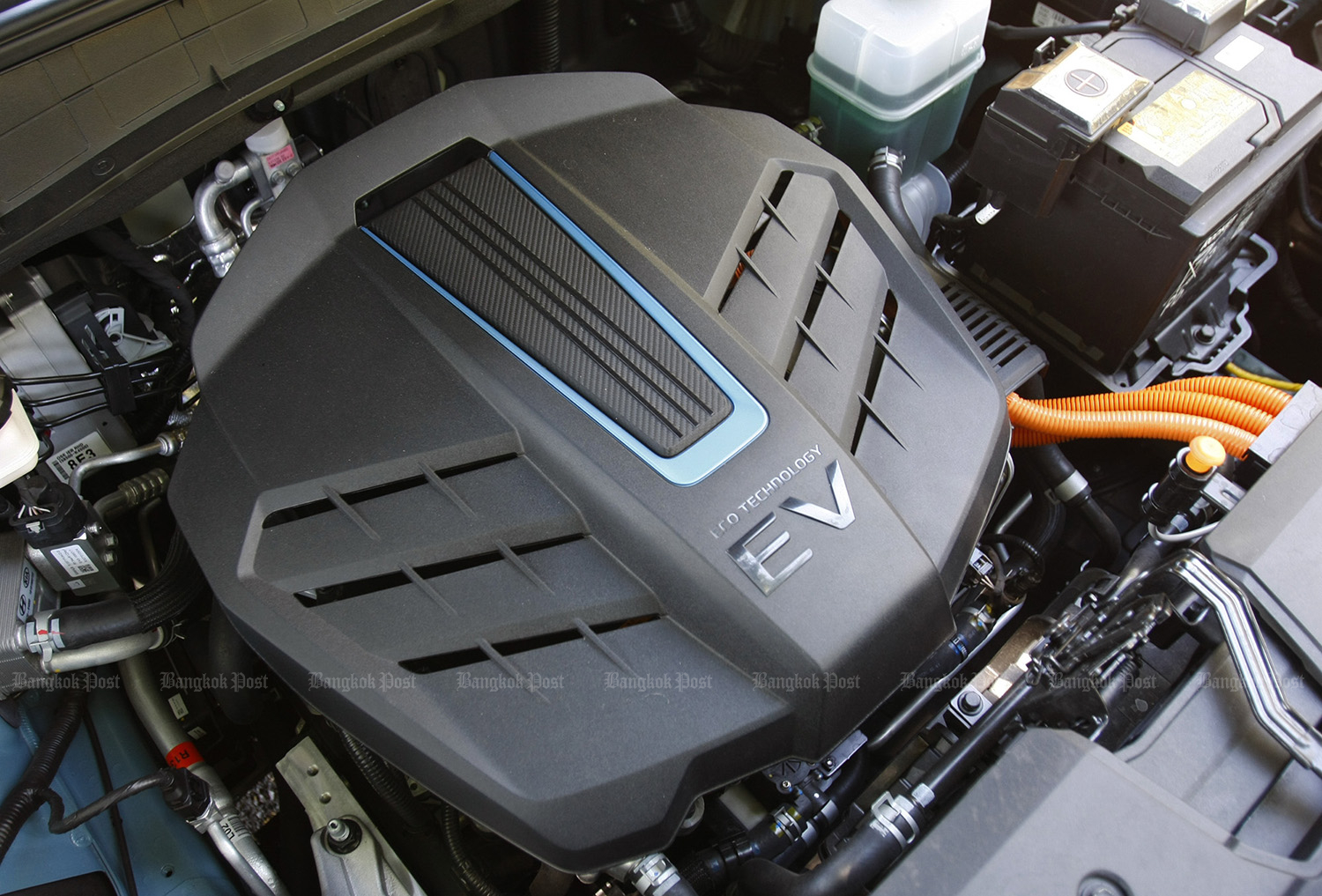We tested Kona in Sri Lanka, will be publishing our well balanced review soon.
Until then read though a write-up of Richard Leu, first published on Bangkok Post along the Thai context and competition.
Hyundai has now packaged its latest battery-electric tech into a popular body style. It surely delivers but not without flaws.

After launching its first battery-electric vehicle in the guise of the Ioniq hatchback, the Thai Hyundai agent has introduced another one making it the first brand in the country to sell two distinct models at the same time.
This time round, it’s called the Kona Electric possessing the dimensions of a B-segment SUV, a body style striving almost anywhere around the world including Thailand.
But because Hyundai needs to import the Kona Electric in fully built-up form, its price is still double that of a pure petrol Honda HR-V or hybrid-powered Toyota C-HR.

And since Hyundai has decided to arm the Kona Electric with the latest in BEV tech, the starting price of 1.849 million baht is 100k more than the C-segment-sized Ioniq Electric. Opt for a bigger battery and pokier electric motor (and more range), the price rises to 2.259 million baht.
Clearly, buyers won’t be flocking to Hyundai showrooms at the instant because these prices can net equally small SUVs from the luxury car camp like the Mercedes-Benz GLA or Lexus UX. However, there are some good reasons for owners of premium branded cars to carry on reading here.

Take a look at the Kona Electric’s kit, for instance. There are various safety features, driving aids, sunroof and smartphone charging tray in basic SE trim.
Settle for SEL, as tested here, and you additionally get head-up display and air-cooled (or heated) front seats. Alright, it may lack brand kudos, but it’s quite well-equipped at this price level.
Then there’s the package which offers more or less the same amount of interior space and versatility as in any other B-segment SUV, be it from the luxury or mass-market scene. Which is to say that the Konda Electric isn’t superbly spacious nor is it otherwise.

But while the cabin features enough modernity and purpose for a BEV, it lacks the perceived quality of premium alternatives by having too many tacky plastics and inconsistent panel gap. For two million baht, finish quality could have been better.

What can really draw the attention from some fat wallets, though, is how the Kona Electric performs with such a new-age drivetrain. Glance at the specs and note that it certainly has received the latest BEV tech given its power and generous range (still measured in NEDC format in Thailand).
In a nutshell, performance in the Kona Electric is always lively, responsive and rich on torque at whichever kind of speed in the real world. The style of urgency associated with BEVs is vividly intact here.

Like in the Ioniq BEV, the Kona Electric incorporates a three-level brake energy regeneration system that can be adjusted via paddles behind the steering wheel. It’s a nice feature because you could occasionally avoid using the traditional brake pedal, which can feel mushy, wooden and difficult to modulate for progressive action.
And while we’re on it, the front-wheel-drive chassis seemingly can’t handle all that magnificent grunt generated from the electric drivetrain in an effective manner. Step too hard anywhere from standstill to some 60kph and the front wheels scream for grip. The same goes for corners where understeer is too prevalent. Mind, this happens even when the chassis electronics are on. Switch them off (which you wouldn’t in normal driving conditions) and prepare to tame those wild, electric ponies.
Clearly, the Kona Electric, especially with this SEL-spec power, could have benefited from some kind of all-wheel drive system. High-riding cars usually suffer from less grip which is also the case for posh SUVs like the front-drive GLA250. It’s a shame because every other thing of the Kona Electric’s chassis seems nicely assessed. The ride is absorbent and comfy around town, while also being sufficiently stable and quiet elsewhere.

Although there wasn’t the chance to test the SE outfit, it begins to make more sense given that it still has 136hp. That’s more than in the Ioniq Electric we tested earlier this year without any real gripes on the performance it has to offer. More crucial, though, is the SE’s 410k savings in price over SEL.
What definitely makes the Kona Electric desirable is how well it can deliver its juice. It’s even fun at the same time especially when you take over other vehicles on the road with such immediacy. It can make BMW X1 owners feel instantly special.
Coming along with that is the fact that the Kona Electric produces no tailpipe emissions which makes itself useful in city areas. And because battery tech keeps improving, you don’t always have to wait for half-a-day to get it recharged. Come home say with 60% of juice left and several hours will do. You’ll have to do the maths to see whether SE or SEL is more suitable.

In the end, the Kona Electric may just be another futile exercise from a brand that’s more associated with tax-friendly, people-carrying vans in Thailand.
However, the Kona Electric has some appeal and probably more of it than in the staid-looking and lower-tech Ioniq Electric. More than in a Merc? In some ways, yes.


All contents and pictures are a property of Bangkok Post